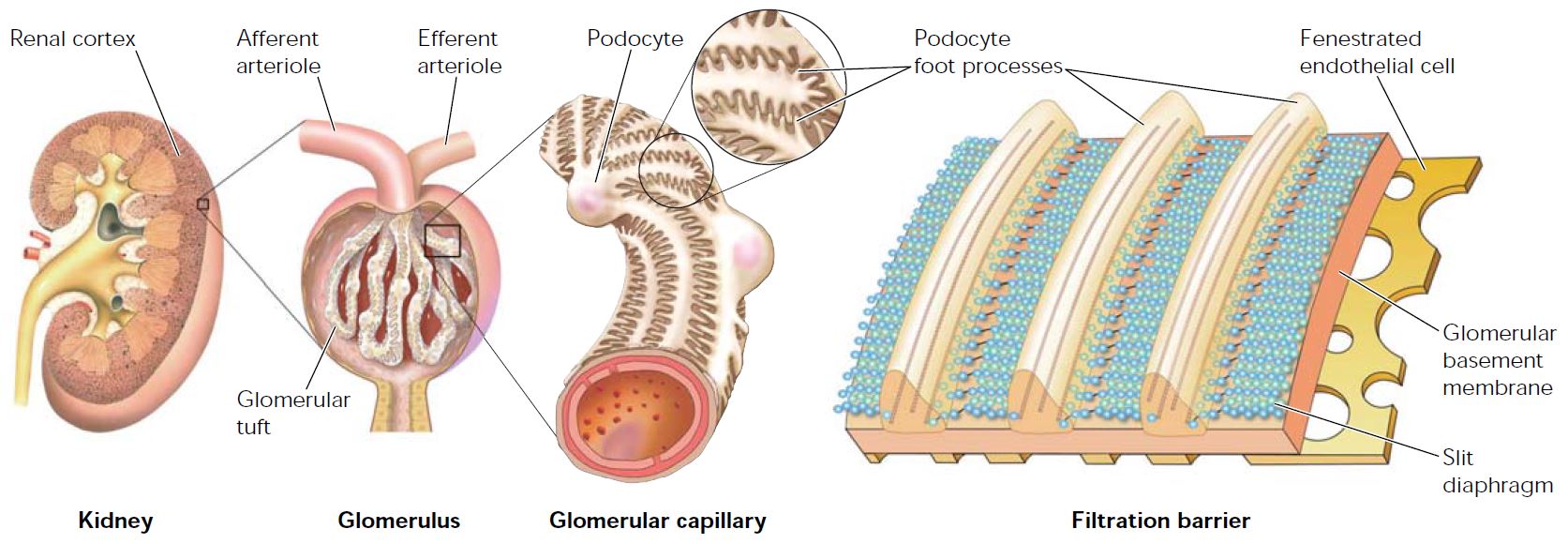The glomerulus is supplied with blood through an afferent arteriole. The blood is collected in the efferent arteriole and then another capillary network creates the peritubular capillaries including the vasa recta.
Filtration of blood in the glomerulus is regulated by Starling forces, where the sum of hydrostatic and oncotic pressure differences between the capillary and the Bowmanns room control the filtration rate of fluids from the blood to the collecting duct system. The filtration barrier ensures that water and smaller particles are freely filtered, while larger proteins and blood cells are retained in the blood. The filtration barrier consists of 3 layers: the fenestrated endothelium, the basal lamina, and filtration slits of the podocytes. The capillary nest in the glomerulus is bound together by the mesangium which consists of fibroblasts and connective tissue. The outer edge of the glomerulus is bordered by the Bowmans capsule. The renal blood flow and pressure in the glomerulus is regulated through autoregulation and tubuloglomerular feedback. This ensures a stable glomerular filtration rate under different physiological conditions.
Diseases that affect the glomeruli can alter the characteristics of the filtration barrier and the glomerular filtration rate. In general, glomerular diseases consist primarily of autoimmune mechanisms or as a part of systemic diseases. It is important to note that glomerular diseases will lead to secondary tubulointerstitial changes in the same way that diseases in the tubuli will affect the function and structure of the glomerulus. Glomerular schlerosis, interstitial fibrosis and atrophy of the tubulus will occur in the chronic end stage of all kidney diseases. The patient's kidneys will shrink and the original disease can no longer be identified.
Proteinuria with or without hematuria are early signs that should give suspicions of glomerular disease. Early diagnosis and adequate measures are important for limiting loss of nephrons and development of kidney failure.

Tryggvason K, Wartiovaara J. How Does the Kidney Filter Plasma? Physiology 2005;20(2):96-101. http://physiologyonline.physiology.org/content/20/2/96
Reprinted by permission of the American Physiological Society. :